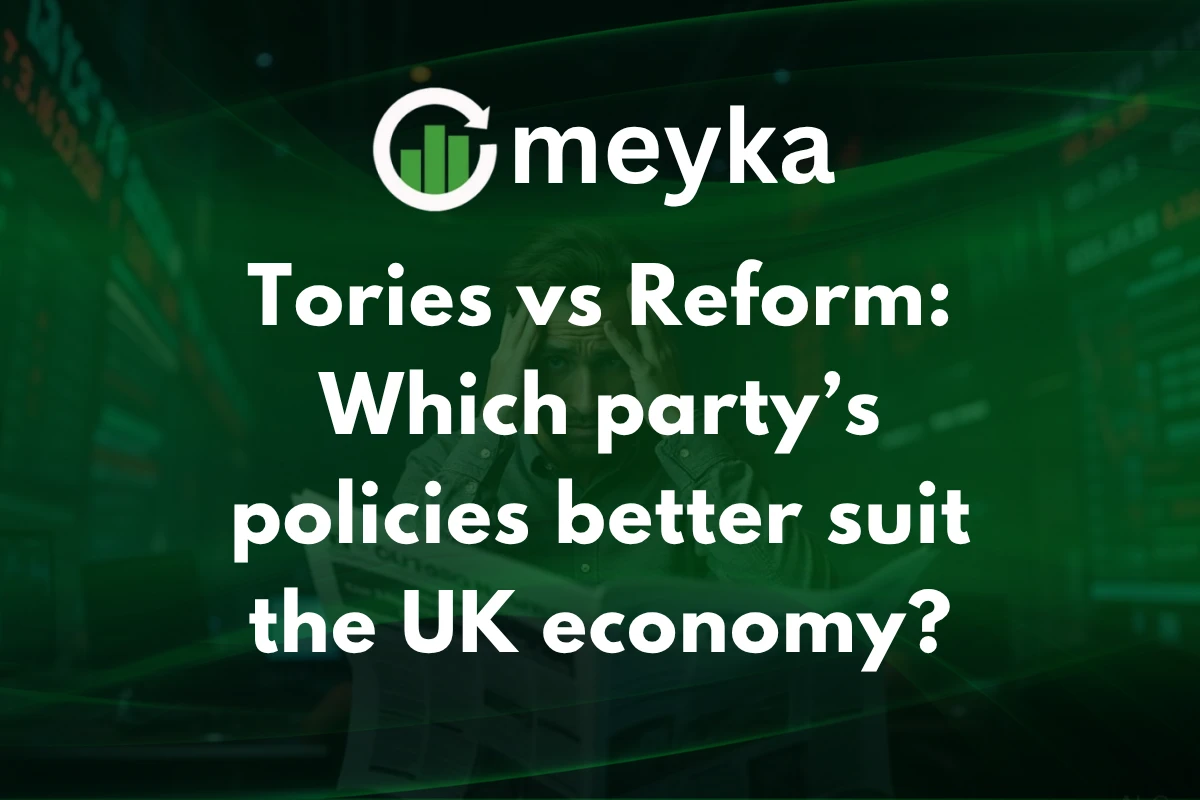Tories vs Reform: Which party’s policies better suit the UK economy?
The debate over Tories vs Reform has become the central economic question for voters in 2025. Tories and Reform UK offer different answers to growth, inflation, taxation, and public services. This article compares their approaches and asks which vision better fits the country now.
Tories vs Reform on taxation and spending
The Conservatives have pushed tax cuts and targeted spending reforms to stimulate growth, while Reform stresses deeper cuts and radical change to public spending. Tory proposals focus on support for businesses and middle earners, including pledges to reduce stamp duty and simplify business taxes.
Reform promises sharper reductions in welfare and a smaller state footprint, arguing this will unleash private investment.
Why is this happening?
Both parties respond to voter frustration with slow growth and high taxes. The Conservatives present incremental change, while Reform offers a sharper break with the past. Public reaction shows a mix of appetite for change and worry about extremes.
Tories vs Reform on inflation and growth
The Tories argue for fiscal discipline to keep inflation under control, paired with pro-growth reforms. Reform claims that cutting taxes and red tape will lift long-run growth faster, even at the cost of short-term disruption.
Economists differ on which route will tame inflation while boosting output; the political debate centres on timing and credibility.
How could it affect British households?
Short-term tax cuts can feel like relief, but they may reduce public services funding or raise borrowing. Voters ask whether lower taxes will translate into higher wages and jobs, or simply higher asset prices. YouGov polling shows many Britons trust the Conservatives more on business, while Reform scores higher on being patriotic and offering radical change, though many also view Reform as extreme.
Tories vs Reform on jobs and investment
Conservative policy emphasises business incentives and infrastructure to attract investment. Reform focuses on deregulation and reshaping welfare to encourage labour force participation.
The net impact on jobs depends on the balance between demand support and structural reforms to skills and housing. Observers note that business confidence will hinge on clear, stable policy signals rather than slogans.
Why is this happening?
Years of weak productivity have pushed both parties to promise growth fixes. Reform wants rapid change; the Tories prefer a staged approach. Voters must weigh speed versus risk. Evidence suggests voters want practical steps that lower bills and expand opportunity, rather than bold but uncertain experiments.
Tories vs Reform on housing and small business support
Housing is a battleground. The Conservatives have promoted stamp duty reform and supply measures, while Reform campaigns for more radical market liberalisation.
For small firms, the Tories offer targeted reliefs, and Reform wants broader deregulation. The difference is tone and scale, with both claiming to back small business growth.
How could it affect British households?
Housing policy affects first-time buyers and renters directly. Small business policy affects local jobs and services. Voters in council wards and towns where Reform has surged often cite housing and costs as top concerns in vox pops and local clips on YouTube, where party members voice anxiety about the Conservative agenda and support for Reform-style change.
Public opinion and political trust
YouGov polling shows a complex picture. Many Britons associate Reform with strong patriotic messaging and radical change, but also with extreme views. The Conservatives retain a lead in perceived support for businesses, while trust in no party to keep promises is high. These signals suggest that policy credibility and delivery matter more than slogans.
YouGov data shows the public rewards clear, actionable plans and punishes vague promises. In swing seats and in working-class towns where Reform has gained ground, voters emphasise bread and butter issues such as bills, jobs, and housing. That focus helps explain why both parties tailor messages to regional concerns.
What makes Reform’s economic plan appealing?
Reform’s clarity and forceful messaging attract voters tired of slow change. Its promises feel simple and direct, and that has appeal in areas hit by stagnation. Yet a majority of the public also worries about extreme positions, creating a trade-off for pragmatic voters.
Economic expert reactions and media framing
Economic commentators in national outlets note both opportunity and risk. The Telegraph’s business coverage contrasts Tory incrementalism with Reform’s bolder fiscal plans, noting both leaders make tax offers but differ on realism and cost control.
Analysts advise testing reform proposals against spending plans and macro forecasts. Commentators also point out that markets react to clarity. If policy plans are vague, investors and businesses may delay hiring and investment.
Conversely, well-signalled reforms that include credible fiscal rules can win market confidence and lower borrowing costs. These dynamics make detail and timing as important as headline promises.
How might these policies impact inflation and growth?
If tax cuts are not matched by credible spending plans, inflation could be pressured through higher demand and asset revaluation. If cuts are paired with credible savings and supply-side reforms, growth may benefit with limited inflationary spill-overs. The difference lies in policy detail and market confidence.
What to watch next
Look for concrete costings, credible deficit plans, and housing steps. Pay attention to council-level results and by-elections, which show where policy messages land. Media scrutiny and independent forecasts will signal which plans are realistic or campaigning rhetoric.
A short answer for voters
Which party best suits the UK economy depends on what you value now. If you prioritise steady institutional management and staged reforms, you may lean towards the Tories. If you want swift, transformational change and accept higher short-term risk, Reform will appeal.
Many voters will choose a middle path that mixes fiscal prudence with targeted growth measures.
Conclusion: Tories vs Reform, which fits Britain now
In the immediate term, Britain needs clear plans that reduce costs, boost supply, and protect living standards. Tories offer incremental fixes that may preserve stability, while Reform offers sharper change that could reshape public services and taxes.
For the UK economy needing growth without disorder, a balanced approach that mixes credible fiscal rules with targeted reforms is likely the safest route. That means protecting essential services, investing in skills and housing, and cutting red tape where it unlocks jobs.
Voters will decide if they prefer steady stewardship or faster transformation, and their choice will shape Britain’s economic path for years to come.
FAQ’S
The Tories focus on steady growth through moderate tax cuts and business incentives, while Reform UK proposes sharper spending cuts and deregulation to accelerate private investment.
Voters are comparing Tories vs Reform because both parties present different answers to inflation, housing, and job creation, key issues shaping the UK’s post-pandemic recovery.
The Conservative plan offers gradual tax relief for middle earners, whereas Reform UK aims for larger cuts but with reduced welfare spending, which could affect overall household income stability.
Tory policies prioritise fiscal stability to manage inflation, while Reform’s proposals risk short-term volatility but may boost growth if successfully implemented.
Experts remain divided. Some say the Tories offer stability and predictability, while others argue Reform UK’s bold measures could unlock higher long-term growth if carefully managed.
Disclaimer
This content is made for learning only. It is not meant to give financial advice. Always check the facts yourself. Financial decisions need detailed research.






